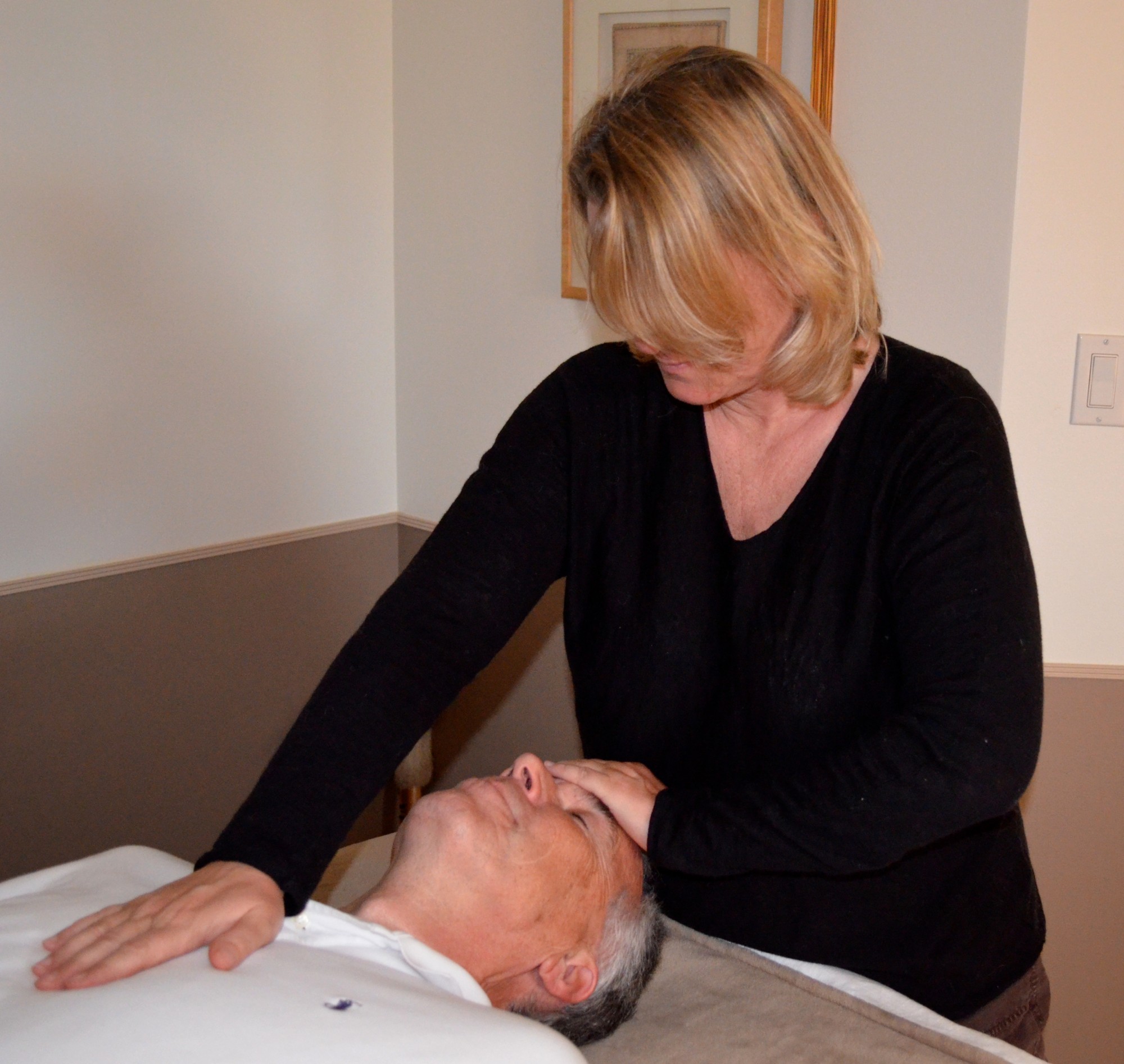
by SharonHartnett | May 29, 2014 | Massage License in Ohio: 33.007505-H-K, Structural Integration
Are You looking to find some Back Pain Relief?
Lumbar strain and injury can result from accidents, overuse and certain traumas.
The severity of your pain can range from mild to severe, from discomfort to muscles spasms. Wherever you are in your process of healing, Structural Integration can help you to find longer lasting pain relief.

Structural IntegrationRelieving Back Pain
Want to find more freedom and grace in your step? It’s smart to investigate finding a way to correct your posture in order to live in more ease in movement. A healthy spine and relaxed surrounding soft tissues will help you to feel happier and healthier all the way round.
Structural Integration in particular is a method of bodywork that aims to restore balance, increase energy, and improve flexibility. If you are experiencing extreme pain, usually the fascia, musculature and ligaments are overly short or overly-extended. Structural Integration is comprised of a ten series of treatments that work on the fascial web that spans the whole body from superficial layers to the deeper containers holding the viscera, skeletal systems and other internal structures. Through the touch and treatment by the practitioner, neurologic receptors fire and the fascia shifts into a gel-sol transformation. What this means to clients is better and softer functional movement. The connection and release of fascial adhesions also relieves the musculature to relax back into its natural form. Fibroblast repair allows for better circulation and fluid exchange.
Gameplan:
If your back is in severe pain now, speaking to your physicians office would be helpful to see if you need to go in for a visit. If they advise you to stay home, it is helpful to ice your back immediately after an incident, apply some compression and get some rest. Massage therapy can be very helpful if it is a soft tissue injury.
If your back issues feel more chronically uncomfortable, finding a healing plan would be the best bet. Usually chronic softer pain is an indicator that muscles and approximate tissues are overly short, tense and overstretched. From a holistic perspective, rotations and twists in one part of the body could be causing misalignments throughout the rest of the body. Finding a massage therapist who knows how to work with fascia would be a great bet to helping you to find your line and more comfort in day to day movement. For each session of Structural Integration, a certain recipe of techniques is applied with a uniquely tailored experience to bring you back to center. When the whole body is addressed holistically each week, the body begins to relate to itself in a more healthy way. Each session is built on the foundational ones behind it to help you to find the freedom and movement you long to feel. Look up Structural Integration Therapists in you area. Write down your questions and make sure they are addressed in a phone interview. If there are no SI therapist near you, research myofascial and Craniosacral Therapists (upledger). They can also focus on unwinding painful patterns and restoring health and wellness in your tissues. If your skeletal structure feels out, you may want to find a reputable chiropractor to make adjustments after the soft tissue restoration.
For more information, call Sharon Hartnett LMT
www.massageincolumbusohio.com
740 966-5153
Columbus, Ohio

by SharonHartnett | May 28, 2014 | Craniosacral Therapy, Massage, Massage License in Ohio: 33.007505-H-K, Structural Integration
What is Depression?
Depression is a mood disorder that causes a persistent feeling of sadness and loss of interest. Also called major depression, major depressive disorder or clinical depression, it affects how you feel, think and behave and can lead to a variety of emotional and physical problems. You may have trouble doing normal day-to-day activities, and depression may make you feel as if life isn’t worth living.
More than just a bout of the blues, depression isn’t a weakness, nor is it something that you can simply “snap out” of. Depression may require long-term treatment. But don’t get discouraged. Most people with depression feel better with medication, psychological counseling or both. Other treatments also may help.
This is how it is defined by the Mayo Clinic with the Link right here: Mayo Clinic

massage helps create positive change.
So what are some of the “other” treatments that may support wellness?
Here is a link to the position held by the American Massage Therapy Association:
https://www.amtamassage.org/approved_position_statements/Massage-Can-Reduce-Symptoms-of-Depression.html
AMTA Consumer Survey Facts
More Americans are incorporating massage therapy into their regular health and wellness regimens to assist with medical conditions:
• 88% of individuals view massage as being beneficial to overall health and wellness
• 88% of individuals believe that massage can be effective in reducing pain
• 75% of consumers surveyed claim that their primary reason for receiving a massage was medical (43%) or stress (32%) related
• 53% of people say their doctor has recommended they get a massage
In recent studies, Massage, which includes touching and working with the soft tissues of the body, has been shown to reduce stress and also take the edge off of depression. These effects are due primarily to the parasympathetic and hormonal levels shifting to reduce stress and anxiety. While massage and bodywork does not cure depression, these changes do help clients to better cope in day to day life.
For people who are feeling alone and disconnected from life, reaching out and finding the right type of therapy may be helpful for you. Intimate massage touch and skill can help you feel rejuvenated and more open to life.
Clients often leave their massage sessions feeling happier and more relaxed.
At Lighten Up Therapies in Columbus, Ohio, we offer three main modalities of bodywork:
-
Craniosacral Therapy
-
Structural Integration
-
Reiki and Brennan Healing Science
Each of these techniques holds the client in confidentiality, sacred listening, and with an intention to help you to reconnect to your health and wellbeing.
If you have any questions,
please contact: Sharon Hartnett LMT 740 966-5153
www.massageincolumbusohio.com

by SharonHartnett | May 15, 2014 | Craniosacral Therapy, Massage License in Ohio: 33.007505-H-K, Structural Integration
Are you one those people who believes Massage is a luxury?
Would you believe that over 38 million people in the United States have received at least one massage therapy session?
Of all these people, my bet is that the majority received some wonderful health benefits. The question is not how much will massage help, but will you commit to giving yourself the physical help you need when you are in pain?
For those of you who know, when you find the right connection with a person who listens to your needs and has the skill to work with your body therapeutically, it’s hard not to walk away feeling less stressed and feeling great. Not only that, many massage therapists have specialities that help in specific situations. In order to stay licensed, each LMT pursues the type of work that interests them to enhance their bag of techniques that work for you. Each modality is geared to specialized issues. For example, Craniosacral Therapy is wonderful for balancing the nervous system. For clients with spine issues, high levels of stress, fibromyalgia, ADHD, this type of work can truly make a life difference. Structural Integration is another modality that layers deeply through the fascia and reorganizes how the body stands and moves in relationship to gravity. This type of work can be very gentle but also very deep and transformational. It depends on your level of comfort. Structural Integration, very similar to the Rolfing method, creates an excellent road to better posture and flexibility. Some people prefer an even lighter touch such as Reiki or other types of energy work like Brennan Healing Science. It’s important to interview therapists and ask them questions so that you find the right practitioner for you!

Massage and Bodywork: Would you rather take a pill or receive an hour long session?
For more information on Massage, please read:
https://www.amtamassage.org/research/Massage-Therapy-Research-Roundup.html?utm_source=%2fresearchroundup&utm_medium=web&utm_campaign=redirect
The AMTA keeps you updated as to the current events and benefits of Massage Therapy.
Update: Since the posting of this article, Sharon Hartnett is only doing Craniosacral Therapy, and not massage any longer.
Warmly,
FAQ Page
Sharon Hartnett CST-D
Worthington, Ohio|Serving the Columbus Area
614 653-8111
To find out more about Craniosacral Therapy, check out my main page.
by SharonHartnett | Mar 22, 2014 | Massage License in Ohio: 33.007505-H-K, Structural Integration
Don’t let Injuries and postural challenges derail you!
In this day and age, fitness is getting easier.
Find out more about Structural Integration and how it can help you to feel better.
One of the goals of a Structural Integration program is to improve one’s flexibility through fascial stretching, as well and increasing balance and strength. It’s our habits that keep us out of shape and in pain. That can be changed! Opening up and freeing the soft fascial tissues can change your life dramatically.
The ten series plan includes bodywork, education and mindfulness in order to find optimal health. With seniors as a focus, it is important to start small and with light fascial contact to find the magic of life in small movements. If you are feeling tight and stressed, realize that it is never too late to start some type of self- care program to reconnect with your vitality and wellness. After each session, you will receive a few homework exercises to help you continue to enliven your connective tissues, allowing space for better circulation, lymph flow, and natural alignment.
Here in the United States, we have learned to believe that getting older means bending over and surrendering to being more limited in our lives. Our lifestyles have supported this by shaping our bodies into unhealthy patterns through the mechanical supports we use rather than finding away to live from our core. We sit most of the day with chairs holding us up, we move forwards in space most of the time while walking, and we learn to bend from areas away from our natural hinges. With the series, you gain a more thorough understanding of what no longer works from a sensory perspective, but more importantly, how to change your movement to reflect more ease in your life on many different levels.
If you have received a series of massage and bodywork before, you are in for a treat.
Let our hands guide you into a sense of freedom and more youthful vibrant energy.

Structural Integration
Call Sharon Hartnett:
(740) 966-5153
Columbus, Ohio

by SharonHartnett | Mar 15, 2014 | Craniosacral Therapy, Massage License in Ohio: 33.007505-H-K, Structural Integration
When muscles are stuck in either over-contracted or over-stretched positions, you’ll often find reduced functioning in that area of the body.
In order to find the best treatment to reduce this type of strain and help nourish overworked muscles, look to supporting healthy fascia through modalities such as: Structural Integration, Craniosacral Therapy or exercises like Yamuna Ball Rolling or Feldenkrais. Through fascial manipulation and mindful movement, it is very possible to restore full body movement. By reopening the adhesions in the tissue, one is able to to restore fluid flow and help the nervous system to enliven, as well as correct the misalignment which helped contribute to that pull.

Finding Healthy Structure through Balance
This adhesion gives you a good view of deformed fascia. As people get older, lifetime stresses often play a significant factor in how we relate within and to our environments. Accidents, illnesses, repetitive motion, and stress can all take us all off kilter. The resulting tension patterns take us out of effortless motion and tend to create pain over time. Fortunately, for us, the fascia is able to self correct through a practitioner’s or proper exercise of gentle pushes and pulls of this continuous fabric of life. Whether you go to a Fascial Bodyworker, or choose to check into using tools such as the balls, Melt Tube,or instructional movement DVDS, it is easy to improve your health by lengthening and unwinding rotations and twists. As the tissues unfold and lubricate, there is more space for movement and nourishment to organs, muscles, and bones. And- we all want to feel our best, right?
The first thing to do to stabilize and balance the body is to find a therapist who will help bring self awareness to you about your fascial body. Learning mindfulness with the body is pivotal in taking responsibility for one’s health. Many people are not familiar with the web-like fasical system and do not know how important it is in regards to postural balance. Yet once a conscious relationship is awakened, you’ll be surprised how simple it is to gain more flexibility and energy. It’s a shame that this system has not been investigated more thoroughly in the past as it is a life altering element of health and wellness. Getting yourself educated by experienced people and good literature will ultimately help you stay in charge for your own life. Take some time to read about all the new finding regarding the role of fascia in the field of wellness. A good place to start is: https://www.theiasi.net/new-to-structural-integration-
Once you have found the best bodyworker for you, make sure that there is educational dialogue. Each person develops in his/her own unique way. It is valuable to share the type of touch that works best for you even with the most experienced therapist. If you have any previous trauma, whether physical, emotional or whatever… please let us know because the best sessions are where there is respect for boundaries and good listening. Sometimes it is the case that the body will allow one in, but repetitive thought patterns and the emotion energy behind that can bring about strong resistance and responses in other levels of consciousness. The whole of a person must be addressed for deep healing and respect of the process and this holistic model is the key to success. The fascia is a continuous web of connective tissue that is responsible for posture. Whatever history you bring into the session will begin to unravel as the whole body changes, and organically many different experiences unfold.
On a personal note, I like to ask my clients not to work out very hard while going through a ten series. Often muscles building can lead to overuse and weaknesses that may be unconscious or imbalanced. It is beneficial to allow the 10 weeks to be dedicated to feeling the body open and lengthen naturally. Personally, I also like to advise clients to use rollers and balls to work each day to keep the fascia hydrated, layered and softer. By the time the client feels a 10 series from the superficial work to the deeper layers and such, he/she (if they have been mindful of their bodies), will feel a dramatic shift into freer mobility, increased energy and integration.
Fascial work originally was brought to attention by Ida Rolf. Since her time, there are now many wonderful graduated practitioners across the globe from schools such as the Institute for Structural Integration,The Rolf Institute,The Upledger Institute, Tom Meyers School and more. The research that is being done is exciting and coming more into the mainstream of the medical community. In my own Private Practice,I have seen people who have lived with years of pain, release and find themselves feeling freer and happier than in previous years. It is always a pleasure to see my clients walking away with more essence and vitality in their step.
Fascial work is so exciting because it can help so many people to feel more deeply and alive. If you have any questions, please call Sharon Hartnett LMT for a free 15 phone consultation.
(740) 966-5153
Columbus, Ohio

by SharonHartnett | Mar 2, 2014 | Craniosacral Therapy, Massage, Massage License in Ohio: 33.007505-H-K, Structural Integration
Chest Pain can be caused by many different circumstances…
If you feel any mechanical restrictions or ongoing pain, make sure that you see a doctor and get your questions answered. However, if everything checks out there, you might find great benefit in finding a Structural Integration or Myofascial Massage Therapist to help you relieve the pain and discomfort.
The first question I would ask as a Massage Therapist regarding thoracic pain is whether you have been in any car accidents. Automobile accidents have become one of the leading reasons why clients come in for help due to thoracic restrictions. When a person crashes, upon the impact, the human body encounters extraordinary pressure. The energy force that moves through is absorbed mainly into the soft tissues around the sternum, clavicles and ribs. The seatbelt area in particular is a place that may feel painful since it holds the body back while the rest of the body jets forward. For clients who have been in an accident, this information allows us to have an idea of how the body was impacted during the crash and give us a direction on how to treat. Other probable causes for structural thoracic pain to be considered might be falling, birth traumas, being physically hit, or any type of trauma that has exerted force through this part of the body. When you come in for intake, it is important for you to relate your history so that we have a thorough understanding of any traumas to the body.
During a session, once you get on the table, we move to a more sensory type of experience. Over the years, a Fascial Massage Therapist learns to feel the subtle layers of connective tissue and how it is organized. We palpate for adhesions, disturbances, lack of motion, and all imbalances. We observe the breathing and notice where it is stuck and where it moves freely.The body gives us all the clues we need to help create more space and flexibility. In particular with the upper thoracic pain, I like to ask my clients to bring mindfulness to their breathing during this type of work. It is amazing how much information people will learn about themselves when they quiet down and be curious about their own basic functioning. What clients with upper chest pain often notice is that there is little moving there at all. Most of the breathing is in the belly and stops before it moves superiorly. It’s important to explore this to help open up the upper chest. Mindful breathing and releasing the breath and any sound is a constructive way to bring ease and flow back into the thoracic area.
Once these patterns of restriction can been observed, it’s time to free up the affected structures. Personally, I begin by using general superficial movements to allow the fascia to get a basic stretch.My intention is pay attention to the diaphragm and thoracic inlet to release them for better breathing and to improve general overall efficient functioning in the area.As I do this, generally smaller and tighter restrictions will also reveal themselves. When I find the smaller spaces that are fixed, we spend more time exploring breathing and my movements into the tissue until we get the tissues to spread and/or unwind. When the layers begin to differentiate and flow over each other more freely, we have achieved success. This ongoing process goes on around the whole thoracic area (including the ribcage) until the breath starts to expand more equally from the front of the upper body to the back.
With the general work said and done, it is next important to check out the joint restrictions. I usually begin by exploring the clavicle and how it relates to the sternum. Some work around the shoulders with gentle manipulations will help allow confined articulations to clear through deep seated patterns.Touching into the sternomanubrial joint with compression and decompression with help repair tension imbalances. Using opposing movements facially from the back to front to engage the tissues will bring about more vitality and rehydration. The idea is to begin to get the body moving on these different layers of fascia to that everything within begins to re-engage with itself and the other. This is what creates health and wellness.
When our bodies face trauma, often the body self-corrects as much as it knows how. However, when a heavy energy force enters the body, often there are residual imbalances that may ended up keeping you stuck out of alignment. Soft tissues, mostly the fascia, are key to work if you want to release habitual distorted structural patterns in the body. You don’t have to live in pain. It is possible to begin to feel better.

Relieve the Pain
If you have more questions about feeling healthier in your body, call Sharon Hartnett for a free 15 minute phone consultation.
Sharon Hartnett LMT, SI, CST
Columbus, Ohio
(740) 966-5153
www.massageincolumbusohio.com







